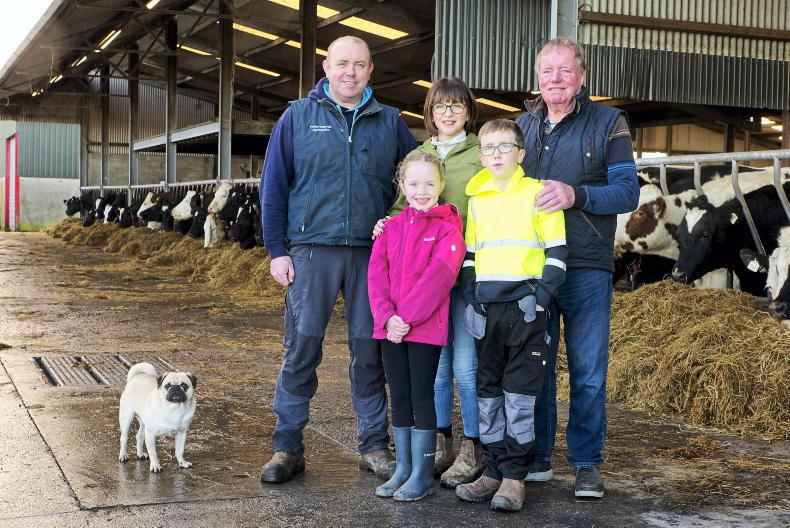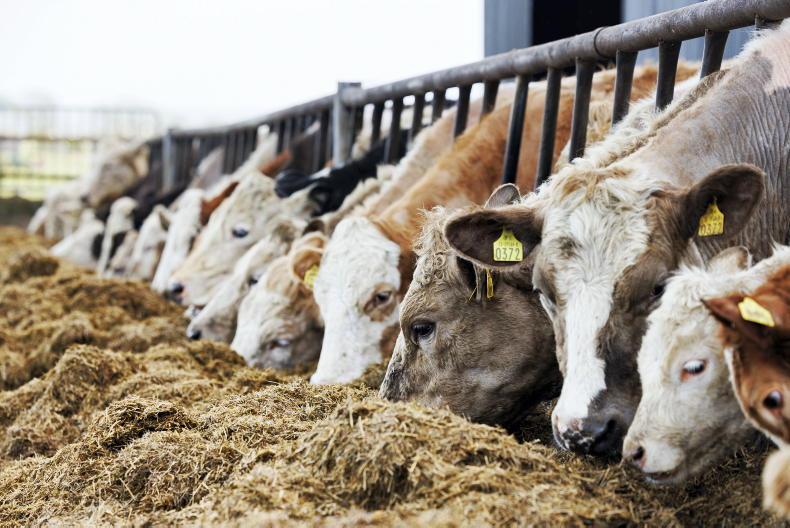The results of a Teagasc study on dairy heifers over two years has resulted in the organisation changing its policy on the timing of AI when it comes to sexed semen on heifers in a fixed-time AI protocol.
Fixed-time AI is when a cow or heifer is given a progesterone device such as a PRID or CIDR along with other hormones to time insemination and ovulation.
The study was conducted over a two-year period with 816 heifers enrolled across 11 farms. Each of the heifers got the same synchronisation programme which consisted of:
Day 0: Progesterone device inserted and GnRH injection (eg Receptal, Ovarelin, Acegon etc).Day 5: Prostaglandin (PG) injection (eg Estrumate, Lutalyse, Enzaprost, etc).Day 6: PG injection and progesterone device removed 24 hours after the first PG injection on day five. Day 8 (day of AI): GnRH injection 48 hours after PG injection and progesterone device removal on day six.Teagasc researcher Stephen Moore carried out the experiment and he says that all of the heifers got the same protocol up to the timing of AI, with half of the heifers getting inseminated with sexed semen at the same time as the GnRH injection on day eight, and the other half getting inseminated with sexed semen eight hours after the GnRH injection.
Stephen says the heifers on the delayed AI treatment had better conception rates compared to those getting inseminated at the same time as the GnRH injection. The later AI treatment had a conception rate of 59% to sexed semen, while the control group served at the same time as the GnRH injection had a conception rate of 50%.
He says delaying AI only applies to situations where the heifers are being served with sexed semen and where conventional semen is being used there is no issue with inseminating at the same time as the GnRH injection is given. See the protocol for heifers in Figure 1.
The protocol for fixed-time AI on cows hasn’t changed. The Teagasc advice is outlined in Figure 2.
The key difference between the protocol for cows and heifers is that the progesterone device is left in the animal for longer.
This protocol is suitable for cows that aren’t cycling or where the farmer is looking to get a bundle of healthy, cycling cows synchronised for sexed semen.
If thinking of going down this road, it’s important that the cows being selected for fixed-time AI will be inseminated on the first day of the breeding season, so as to ensure that any repeats are captured as close as possible to the first three weeks of the breeding season.
However, it’s important to note that synchronising cows is expensive and that the protocol must be followed exactly to ensure the best chance of conception to that service.
Prostaglandin
Prostaglandin (PG) has long been used as a tool to synchronise heifers. The simplest approach is to serve heifers observed in standing heat for seven days and then inject any heifers not seen bulling with PG.
These animals can then be served to standing heat over the next two to five days. After 11 days, most of the heifers will have been served. Those not served could be injected with PG on day 18.
Good heat detection is necessary when using PG because this is needed to pick up the heifers that are bulling.
Most farmers will use aids such as scratch cards, Kamars or tail paint to help identify the heifers in heat.
Most farmers will then run a stock bull with the heifers after the period of AI is over, although some farmers will continue with AI and heat detection until the period for potential repeats is over.
Prostaglandin can also be used to bring forward a heat on milking cows. Some use it to synchronise healthy, cycling cows in order to condense and increase submission rates such as those using a why-wait approach.
However, it is more commonly used to bring forward the heat of late-calving cows or cows whose heats have been missed.
Whether or not PG on its own will be effective at this or not will all depend on whether or not the cow is actually cycling, ie has a corpus luteum on its ovaries. The cow would need to be scanned by a vet/trained technician in order to verify this.
The results of a Teagasc study on dairy heifers over two years has resulted in the organisation changing its policy on the timing of AI when it comes to sexed semen on heifers in a fixed-time AI protocol.
Fixed-time AI is when a cow or heifer is given a progesterone device such as a PRID or CIDR along with other hormones to time insemination and ovulation.
The study was conducted over a two-year period with 816 heifers enrolled across 11 farms. Each of the heifers got the same synchronisation programme which consisted of:
Day 0: Progesterone device inserted and GnRH injection (eg Receptal, Ovarelin, Acegon etc).Day 5: Prostaglandin (PG) injection (eg Estrumate, Lutalyse, Enzaprost, etc).Day 6: PG injection and progesterone device removed 24 hours after the first PG injection on day five. Day 8 (day of AI): GnRH injection 48 hours after PG injection and progesterone device removal on day six.Teagasc researcher Stephen Moore carried out the experiment and he says that all of the heifers got the same protocol up to the timing of AI, with half of the heifers getting inseminated with sexed semen at the same time as the GnRH injection on day eight, and the other half getting inseminated with sexed semen eight hours after the GnRH injection.
Stephen says the heifers on the delayed AI treatment had better conception rates compared to those getting inseminated at the same time as the GnRH injection. The later AI treatment had a conception rate of 59% to sexed semen, while the control group served at the same time as the GnRH injection had a conception rate of 50%.
He says delaying AI only applies to situations where the heifers are being served with sexed semen and where conventional semen is being used there is no issue with inseminating at the same time as the GnRH injection is given. See the protocol for heifers in Figure 1.
The protocol for fixed-time AI on cows hasn’t changed. The Teagasc advice is outlined in Figure 2.
The key difference between the protocol for cows and heifers is that the progesterone device is left in the animal for longer.
This protocol is suitable for cows that aren’t cycling or where the farmer is looking to get a bundle of healthy, cycling cows synchronised for sexed semen.
If thinking of going down this road, it’s important that the cows being selected for fixed-time AI will be inseminated on the first day of the breeding season, so as to ensure that any repeats are captured as close as possible to the first three weeks of the breeding season.
However, it’s important to note that synchronising cows is expensive and that the protocol must be followed exactly to ensure the best chance of conception to that service.
Prostaglandin
Prostaglandin (PG) has long been used as a tool to synchronise heifers. The simplest approach is to serve heifers observed in standing heat for seven days and then inject any heifers not seen bulling with PG.
These animals can then be served to standing heat over the next two to five days. After 11 days, most of the heifers will have been served. Those not served could be injected with PG on day 18.
Good heat detection is necessary when using PG because this is needed to pick up the heifers that are bulling.
Most farmers will use aids such as scratch cards, Kamars or tail paint to help identify the heifers in heat.
Most farmers will then run a stock bull with the heifers after the period of AI is over, although some farmers will continue with AI and heat detection until the period for potential repeats is over.
Prostaglandin can also be used to bring forward a heat on milking cows. Some use it to synchronise healthy, cycling cows in order to condense and increase submission rates such as those using a why-wait approach.
However, it is more commonly used to bring forward the heat of late-calving cows or cows whose heats have been missed.
Whether or not PG on its own will be effective at this or not will all depend on whether or not the cow is actually cycling, ie has a corpus luteum on its ovaries. The cow would need to be scanned by a vet/trained technician in order to verify this.










SHARING OPTIONS